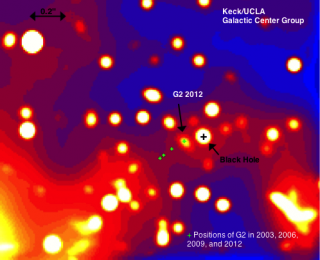
by Ben Montet | Jun 28, 2013 | Daily Paper Summaries
The gas cloud G2 is rapidly approaching the galactic center. Can tidal disruption events with stellar remnants help constrain its orbit?

by Kim Phifer | May 24, 2013 | Daily Paper Summaries
TITLE: Supernovae in the Central Parsec: A Mechanism for Producing Spatially Anisotropic Hypervelocity StarsAUTHORS: Kastytis Zubovas, Graham A. Wynn, Alessia GualandrisAUTHORS’ INSTITUTION: Theoretical Astrophysics Group, University of Leicester Hypervelocity Stars In 2005, Brown et al. discovered a star with a radial velocity of ~700 km/s, which is more than 3 times the Solar velocity! This star is moving so quickly that its velocity is high enough to escape the Milky Way. The existence of such stars, deemed hypervelocity stars (HVSs), was predicted almost 20 years earlier by Hills (1988). The so-called Hills mechanism ejects stars at high speeds from the center of the Galaxy after a binary stellar system gravitationally interacts with the supermassive black hole at the center of the Galaxy. In such a three-body interaction, one star can be ejected at very high speeds while the other remains in the central region of the Galaxy on a highly eccentric orbit. A number of highly eccentric short-period stars are observed in the Galactic center, which suggests associated HVSs may exist. Since the initial discovery of an HVS in 2005, many more have been discovered (see this astrobite). A small warning: the exact definition of HVSs can vary throughout the literature. In this post, stars traveling away from the Galactic center with velocities high enough to have become unbound from the central black hole are referred to as HVSs.While it is very likely that the Hills Mechanism does create HVSs, it is unclear whether all HVSs are created via this method. Curious if there is a supplemental method to produce HVSs, the authors of today’s paper examine the production...
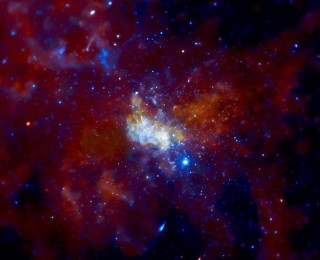
by Anna Rosen | Apr 25, 2013 | Daily Paper Summaries
In this paper, the authors use near-IR imaging and spectroscopy to determine if G2, a galactic center source about to approach our galaxy’s supermassive black hole, is a gas cloud or a star.
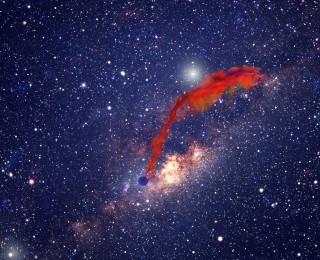
by Justin Vasel | Sep 17, 2012 | Daily Paper Summaries
Paper Title: Disruption of a Proto-Planetary Disk by the Black Hole at the Milky Way Centre Authors: Murray-Clay, R. A. and Loeb, A. Institution: Harvard-Smithsonian Center for Astrophysics (CfA)If our solar system lives in suburbia, the center of our galaxy is a sprawling metropolis shining bright for all to see. The center of our Milky Way Galaxy is a crowded, bustling and hectic place. Stars race around like cars on a freeway. Densely-packed hot stars and supernova explosions flood the region with deadly radiation. The supermassive black hole at the center destroys anything that dares to wander too close and test its strength. The galactic center is different than what we’re used to. It’s exciting. It’s dangerous. It’s the kind of place that’s fun to visit, but you wouldn’t want to raise your kids there. The traditional wisdom among astronomers is that stars feel the same way; There is just too much excitement going on in the galactic center for planets to form around stars…Or is there?Last year, a team of astronomers at the Very Large Telescope (VLT) in Chile discovered a cloud of gas falling towards the black hole at the center, Sagittarius-A* (SgrA*). The team hypothesized that the gas cloud was the result of a collision between two gas clouds streaming from nearby stars. New research from the CfA proposes the seemingly-unlikely explanation the gas cloud is a proto-planetary disk surrounding a star that is too faint to see. A proto-planetary disk is a cloud of gas and dust that orbits a star for millions of years while it slowly coalesces into planets and asteroids and comets; It is where...
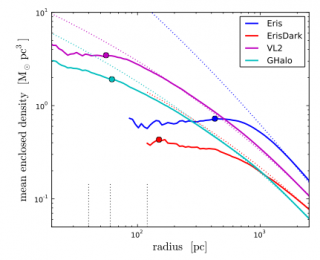
by Elizabeth Lovegrove | Aug 28, 2012 | Daily Paper Summaries
As Astrobites reported a couple of months ago, the Fermi-LAT gamma-ray telescope has reported an anomalous peak at 130 GeV, which could be the long-sought annihilation signature of dark matter. However, one of the strongest critiques of this potential discovery is that the signal is not coming from Sgr A*, the dynamical center of the Milky Way, but rather from about 200 parsecs away. Kuhlen et al. challenge the idea that the dark matter peak must be located at the dynamical center, and find that the combined dark matter-baryonic matter simulation Eris shows a well-defined, consistent offset between its dark matter peak and dynamical center.
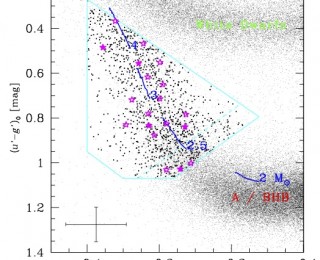
by Evan Schneider | Mar 20, 2012 | Daily Paper Summaries
Five new hypervelocity stars have been discovered in the outer regions of the Milky Way. In this paper, the authors discuss what these stars are, how they got so far away, and what their distribution implies about the center of our galaxy.






